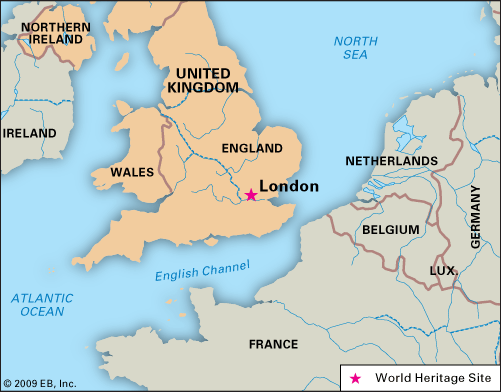News •
International significance
The London economy was relatively fortunate in being able to offset manufacturing decline by participating in the growth of global financial markets. By 1990 one in six members of London’s workforce was in financial or business services—one-third of Britain’s total employment in these sectors. The City (“the Square Mile”) claimed to have the largest concentration of financial employment in the world.
London’s role as a world financial center has long historical roots. At the end of the 19th century more than half the world’s trade was financed in British currency (pounds sterling). In the early 20th century the City played a more modest role as banker to the British Empire and the sterling area of trading nations. It regained a global presence thanks to the relaxation of exchange controls in 1958, the development of the Eurocurrency and Eurobond markets in the 1950s, and the deregulation of capital and securities markets in the 1980s.
In the 1990s London’s most significant revenue-earning function was to provide a center for the international banking market. A unique concentration of banks from every corner of the globe allowed an exceptional range of currencies to be traded. In the competitive climate of contemporary global finance, it captured a large share of activity in the newer, esoteric markets—swaps, cross-exchange equity trading, and currency options—and also maintained its historical position in the conventional fields of international bank lending, underwriting, bond trading, foreign exchange trading, and investment management. London became Europe’s main center for large volume trading in securities. It dominated the world market in marine and aviation reinsurance.
Financial districts
The office towers of the financial services sector cluster tightly in the historic central business district of the City. Banking, insurance, maritime services, commodities, and stockbroking are each associated with particular districts within the City. The advantages of proximity and face-to-face dealing are offset by the shortage of space. The Square Mile is not Hong Kong or Manhattan or Chicago’s Loop but a medieval city in which building opportunities are limited at every turn by the presence of ancient monuments and by fragmented and complex patterns of land ownership. During the 1980s, financial service activity began to spill into neighboring areas with better availability of land. Obsolete railway stations provided many opportunities for office redevelopment—notably the renowned Broadgate project at Liverpool Street Station to the north of the Square Mile—as did the great premises in Fleet Street, to the west, that had been vacated by newspaper publishers in their shift from hot-type production to computer typesetting. The most spectacular secondary center was the business city of Canary Wharf, built by the Canadian Reichmann brothers in the derelict docks 1.5 miles (2.4 km) east of the Square Mile. The project bankrupted its developers but left London with an enduring memorial of the boom years of the financial services revolution.

























